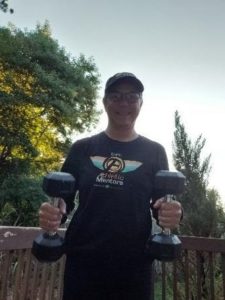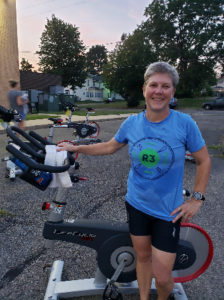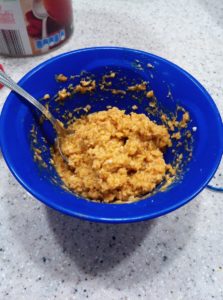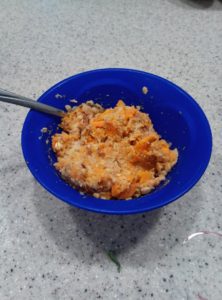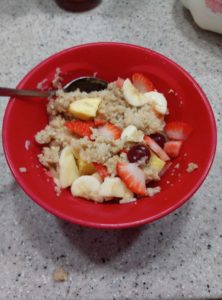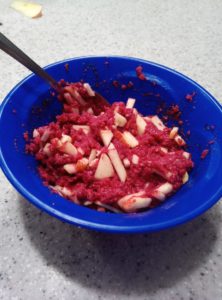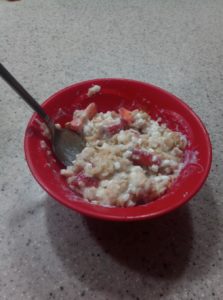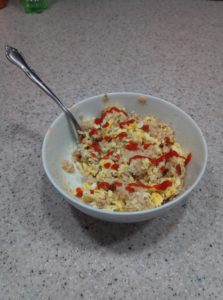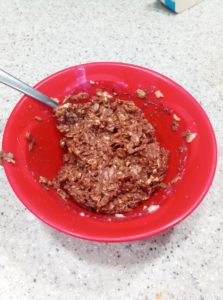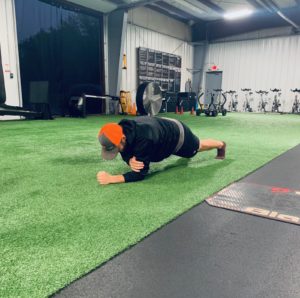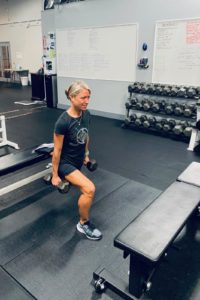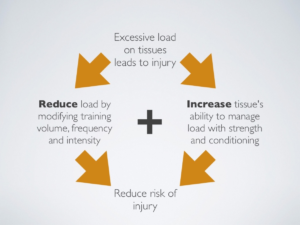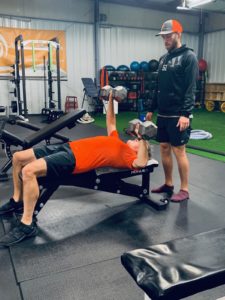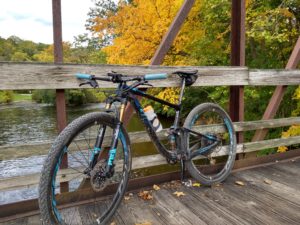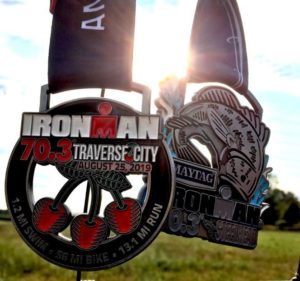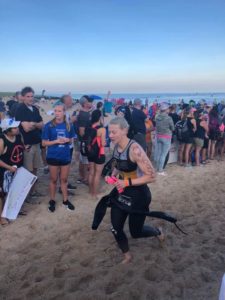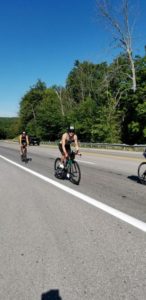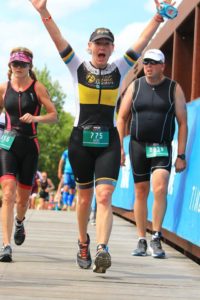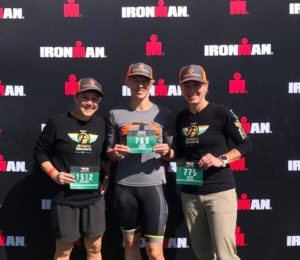By: Erin Young
Runners, just like everyone else, are often set in their ways. We like the shoe brand that we have been wearing for years and will never switch. We have our favorite routes, which we run religiously at least 3 times a week. And we are hesitant to leave the comfort of the road to try out something new, like trail running.
 We have excuses like, It’s too hard on your body, I’ll get lost, It’s dangerous, the monsters in the woods will eat me… Well, I’m writing this to let you know that is is actually less stressful on your body, you can run out and back to avoid getting lost or download one of the nifty apps (Alltrails) for your phone, and I promise you that people are more dangerous than wildlife… and monsters.
We have excuses like, It’s too hard on your body, I’ll get lost, It’s dangerous, the monsters in the woods will eat me… Well, I’m writing this to let you know that is is actually less stressful on your body, you can run out and back to avoid getting lost or download one of the nifty apps (Alltrails) for your phone, and I promise you that people are more dangerous than wildlife… and monsters.
I left the road years ago. Occasionally I have to run a little road to get to the dirt, but the road is much less adventurous to me after the years spent on trail. I love helping others find the adventure and beauty of the trails. It has made me a stronger runner, physically and mentally. But here are 41 other reasons to run trail as soon as tomorrow…
1) You won’t find traffic lights on the trail. There is nothing worse than stopping every block to wait for the light to change. Avoid those pesky lights all together by hitting the trails.
2) Wildlife on the road usually comes in the form of roadkill, but on the trail, you are one with nature and all the wildlife that comes with it. But remember they are more afraid of you than you are them!
3) Trail running is easier on the knees than pounding the pavement. The more giving trail will help prevent injury to knees and joints.
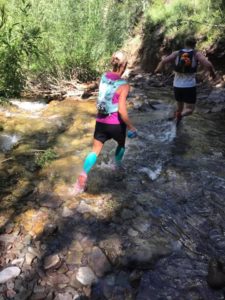 4) Trail running strengthens ankles, also helping to strengthen the muscles that support your feet and legs.
4) Trail running strengthens ankles, also helping to strengthen the muscles that support your feet and legs.
5) You aren’t going to get hit by a car on the trail, so while other dangers might be of concern, traffic most certainly is not.
6) Balance is a big issue for many of us. When trail running we are forced to adjust our balance with every stride. Over time that practice will improve our balance which helps us not only in the present, but as we age.
7) It is hard to get bored on a run, when you are constantly paying attention to your footing and your surroundings are so beautiful.
8) Trail running lets you experience the seasons in the rugged way nature intended.
9) Roads are designed so that hills are not too steep or sudden. Trails are not. You can run killer hill workouts on the trail that could never be done on the road.
10) Some of the best running races in the world are run on trails. By getting into trail running, you open yourself up to a whole new world of races both locally and elsewhere.
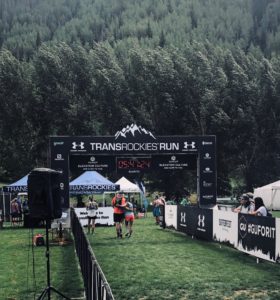 11) By running the singletrack, you gain immediate membership into a new running subculture. The trail running community is very friendly, I promise.
11) By running the singletrack, you gain immediate membership into a new running subculture. The trail running community is very friendly, I promise.
12) If you want to run ultramarathons, you better start thinking about trail running. Most ultras are run on trail.
13) Trail running works a variety of muscles in the legs and back, giving you a more well-rounded workout than running on smooth pavement. This is important for strength and helps prevent injuries.
14) Trails can be found just about anywhere. Check out the AllTrails app for wherever you live and travel.
15) Every new location provides a distinct trail experience. The type, elevation, and views from one trail can be completely different than another.
16) When running you can cover much more ground than hiking. Turn that 5 mile day hike through the woods into a 10 mile trail run in the same amount of time!
17) Nothing screams adventure like a trip deep into the wild wilderness.
18) Slow trail running builds crazy amounts of muscle that road running just can’t do. When you hit the roads after a few trail outings, you’ll notice that new strength speed.
19) People, bikes, and strollers all crowd the sidewalks you are trying to run down. Get away from the crowds by hitting the trail.
20) Getting dirty is a lot of fun, and really easy to do when trail running. Think of it as being a kid again.
21) You can take a lot cooler pictures from a mountain peak or river bank than you can from a city sidewalk.
22) Trail running can be turned into an entire vacation by camping out on the trail and running during the day.
23) Need a boost to your self-esteem? Start telling people you are trail runner. They will think you are a badass, trust me.
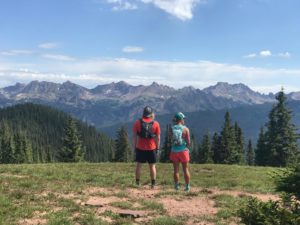 24) Everyone likes to have an excuse to run slow. You will naturally run slower on trails than the road, so now you don’t have to hide it!
24) Everyone likes to have an excuse to run slow. You will naturally run slower on trails than the road, so now you don’t have to hide it!
25) Training at a higher elevation makes running at low elevations easier. Trails will often lead you up a mountain or along a ridge, providing great opportunities for running at elevation.
26) When you read blogs like irunfar.com and atrailrunnersblog.com, you will relate.
27) Being a trail runner doesn’t mean you can’t still be a road runner.
28) You burn 10% more calories trail running than you do on regular road running.
29) Many runners rank solitude as one of their favorite parts about running. On the right trail, you will feel like you are the only person in the world. But there are often great opportunities to make life long trail friends!
30) Trail hills can be tough, but no one in the trail running community cares if you throw your hands on your knees and power-hike your way up the hill. In fact, it is expected!
31) Trying out a new sport means trying out cool new gear!
32) It is really easy to get lost when trail running (in your thoughts, hopefully not on the trail). And in my opinion, so what if you get lost on the trail. It might be the best adventure you’ve had in years. These days, it seems far more difficult to get lost than it is to find your way home.
33) Adrenaline keeps a lot of runners going when they are tired. By moving your run to a more extreme location (a trail), that adrenaline keeps pumping.
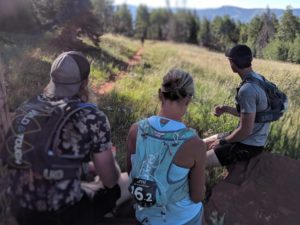 34) When you need a rest, it’s a lot more pleasant to rest by a creek, under a tree, or on a mountain peak than on a street corner.
34) When you need a rest, it’s a lot more pleasant to rest by a creek, under a tree, or on a mountain peak than on a street corner.
35) You’ll begin to feel like a Tarahumara Indian. See Born to Run, required reading for all trail runners.
36) It is easy to turn a short run into an all-day trek through the woods. Switch between hiking and running if you want to spend more time on the trail.
37) After following a few simple steps, even the indoorsman can feel prepared. There is nothing you’ll need that a handheld water bottle or hydration pack won’t carry.
38) The softer surface will help keep your feet healthy as you break in those new minimalist kicks.
39) Hikers think you are crazy, sexy, cool, when you speed by them.
40) Right now you probably get weird looks when you break out the headlamp for early morning or late evening road runs. No one out on the trail at that time of day/night would think twice about the glowing lantern coming from your forehead.
41) Trail scars are impressive.
That might seem like a lot of reasons, and there are so many more. If you ever need a guide, I’m your girl. Coaching endurance and trail runners is my favorite thing to do, besides running trails! erin@athleticmentors.com
 running shoes and ran. No strength training. No cross training. Just running. In my early 40’s I decided to train for my first half marathon. I didn’t follow a training plan. I didn’t ask for advice. I just kept doing the same thing I had always done. I just ran! Different distances on different days. Maybe a little speed work. Rest days? Not if I could help it! I’m sure you can guess what happened…by the time the half marathon arrived I was really hurting. Foot, knee, hip. Injured. So I vowed never to run a half marathon again.
running shoes and ran. No strength training. No cross training. Just running. In my early 40’s I decided to train for my first half marathon. I didn’t follow a training plan. I didn’t ask for advice. I just kept doing the same thing I had always done. I just ran! Different distances on different days. Maybe a little speed work. Rest days? Not if I could help it! I’m sure you can guess what happened…by the time the half marathon arrived I was really hurting. Foot, knee, hip. Injured. So I vowed never to run a half marathon again.  have been able to compete to the level I would have wanted to this summer due to a lingering hip injury. As I have made my way to several different doctors over the last 2 years I hear much of the same. My injury is caused by arthritis but is worsened by pounding the pavement. As one doctor put it, “Your hips are like a tires. The tread will wear down eventually. And you have a lot more miles on your tires than most people!” Each doctor though has encouraged me to continue cycling, swimming and strength training. These activities have kept me strong and have actually helped me!
have been able to compete to the level I would have wanted to this summer due to a lingering hip injury. As I have made my way to several different doctors over the last 2 years I hear much of the same. My injury is caused by arthritis but is worsened by pounding the pavement. As one doctor put it, “Your hips are like a tires. The tread will wear down eventually. And you have a lot more miles on your tires than most people!” Each doctor though has encouraged me to continue cycling, swimming and strength training. These activities have kept me strong and have actually helped me! 





